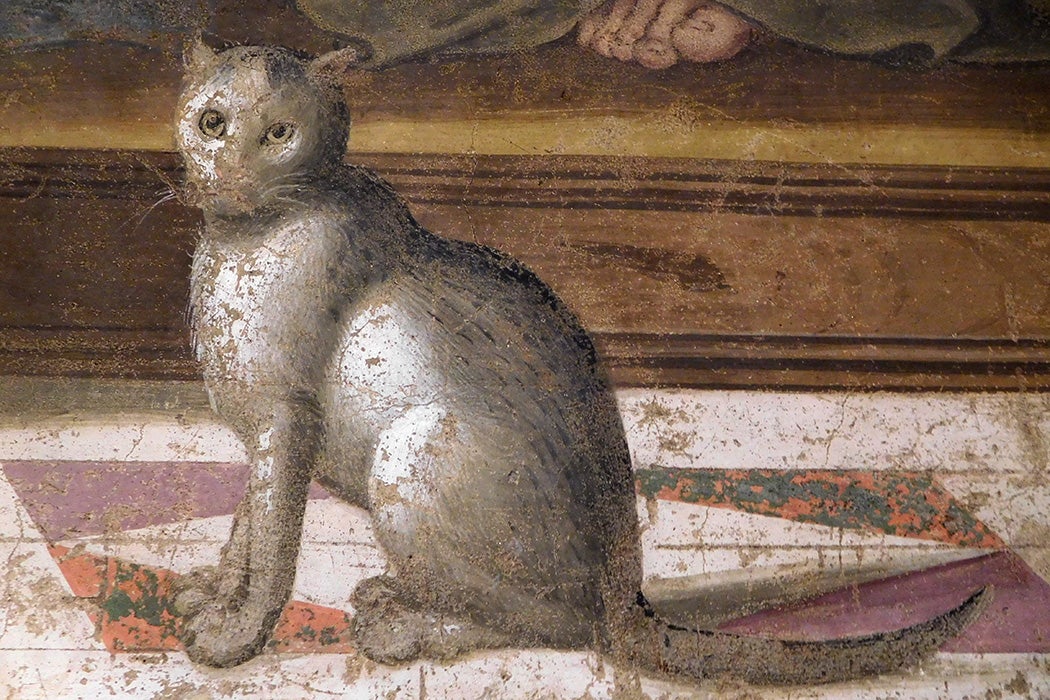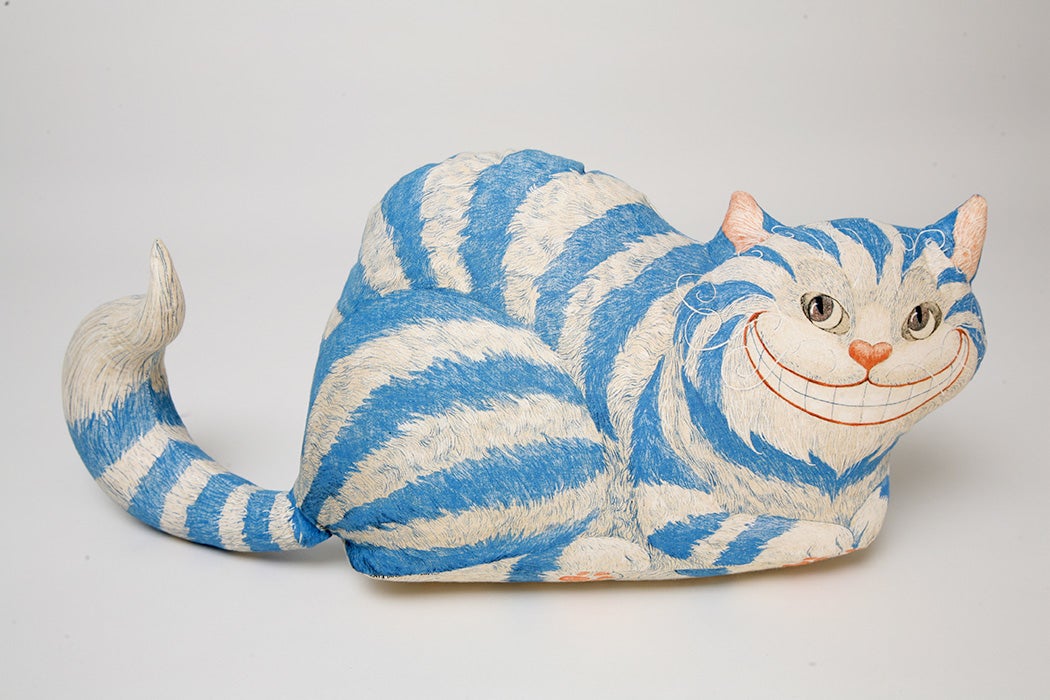There’s nothing like curling up with a good book and a soft cat. And, as literary critic Maria Nikolajeva writes, it’s easy to find a good book featuring a cat. Since ancient times, cats have played all sorts of roles in literature around the world.
In some early cultural depictions, Nikolajeva writes, cats were close to the gods. In ancient Egypt they found sanctuary in the temples of Bast. In Norse myths, Freya, goddess of love, rode on a chariot drawn by cats. Across Egypt, Asia and Europe, mythic felines slew serpents or dragons.
On the other hand, in medieval Europe, cats were often tied to Satan. Painters placed them near Judas in the Last Supper. In Slavic folklore, a giant black Bayun-Cat lulled people to sleep only to rob or eat them. And, of course, cats have been associated with witches from Macbeth to Harry Potter. The evil connotations were bad news for real cats, who were sometimes burned with the witches they supposedly served.
By the start of the nineteenth century, Nikolajeva writes, cats were becoming increasingly popular pets among the middle and upper classes of Europe and the U.S., and their depictions on the page became more cuddly as well. Anthropomorphized cats became stars of fables and nursery rhymes. Children’s picture books also served up plenty of stories about cats who were basically furry people, like the titular character of Beatrix Potter’s The Tale of Tom Kitten (1907).

But literary cats never quite lost their edge. As the cat in Rudyard Kipling’s Just So Stories (1902) explains: “I am not a friend, and I am not a servant. I am the cat who walks by himself.” Kipling’s cat strikes up a bargain with the human, promising to catch mice in exchange for the chance to drink warm milk, sit by the fire and, crucially, come and go as he pleases.
In more fantastical stories, cats may be tricksters, liminal figures, or chaotic forces, like Lewis Carroll’s Cheshire Cat or Dr. Seuss’s Cat in the Hat. In Coraline by Neil Gaiman, a black cat who can travel between two worlds explains that he has no name: “You people have names. That’s because you don’t know who you are. We know who we are, so we don’t need names.”
Weekly Newsletter
In the years before Nikolajeva’s paper was published in 2009, children’s novels told from a cat’s point of view, particularly the “Warrior Cats” series, were becoming wildly popular, adding to the pantheon of cats in stories, plays, and poems.
“I would claim that cats are by far the most popular figures in all kinds of stories,” Nikolajeva writes. “The reason can be the unquestionable appeal of the felines originating in their mystical nature, their independence and cunning, and the peculiar combination of devotion and treachery.”







